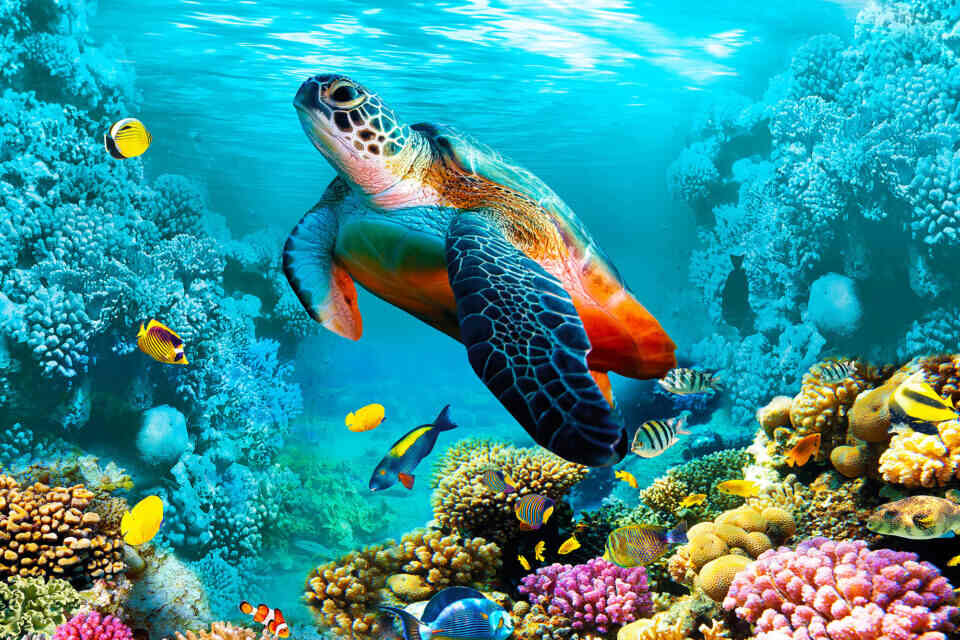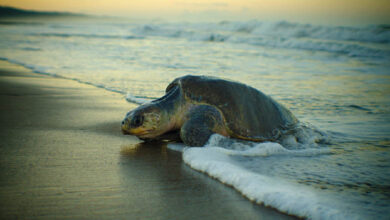
Being a “keystone species” implies that sea turtles play a significant role in their surroundings and have an impact on neighboring species. The food chain, fish production, and the dynamics of marine ecosystems all depend on sea turtles remaining in the water. Being a keystone species, their disappearance could have a disastrous effect on the equilibrium of ocean ecosystems, which has varying effects on other animals and plants.
Sea turtles are an essential component of the planet’s food system, helping to regulate and preserve the health of the ocean. Such as, Hawksbill turtles, which are specialized in consuming a few types of marine sponges, live in coral reefs. The absence of hawksbills allows sponges to grow too quickly, suffocating slower-growing corals until they perish. The hawksbill’s importance to the reef is increasing as threats from climate change and other factors make reefs more vulnerable.
Jellyfish populations are managed by leatherback sea turtles, who are experts at devouring them. Jellyfish populations would skyrocket if leatherbacks went extinct. Since jellyfish feed on larval fish, the sea would be devoid of fish if leatherbacks didn’t exist. It’s all about equilibrium once more.
Sea grasses are the main food source for adult green sea turtles, who serve as aquatic lawnmowers to maintain the health of seagrass beds. Many fish species have access to safe nursery sites, food sources, and habitat thanks to seagrass beds, which are found in shallow marine waters. This allows the fish to avoid predators until they grow larger. In addition to storing carbon, robust seagrass beds stabilize the ocean floor, reducing erosion caused by storms and waves.
Outside of the water, sea turtles also have a positive impact. By leaving their eggs in the sand, sea turtles that are nesting benefit coastlines. The nutrient-rich eggshells and unhatched eggs that are left behind support beach grasses and other dune flora that stabilizes dunes and reduces coastal erosion.
Long migrations are undertaken by sea turtles, who also assist in the movement of diatoms, remoras, algae, and other small crustaceans. Additionally, fish that use them as cover from predators utilize them as a kind of canopy. Similar to a reptile aircraft carrier, sea turtles occasionally offer seabirds a place to land when they need to breathe or rest at the surface of the water.
Sea turtles play an important cultural role for many coastal communities around the world. Many indigenous cultures revere them or consider them ancestors. They are also an important source of income for coastal residents through turtle-watching ecotourism.
It involves everything from preserving healthy coral reef ecosystems to moving vital nutrients from the sea to beaches and coastal dunes. The extinction in many parts of the world has resulted in significant changes to the waters. Our oceans are ill and seriously threatened by pollution, overfishing, and climate change. In order to guarantee resilient and healthy oceans in the future, it is imperative that we safeguard sea turtles and restore their populations to healthy levels.
Farhana Islam
Agriculturist, Researcher
Fisheries Resource Management, CVASU


